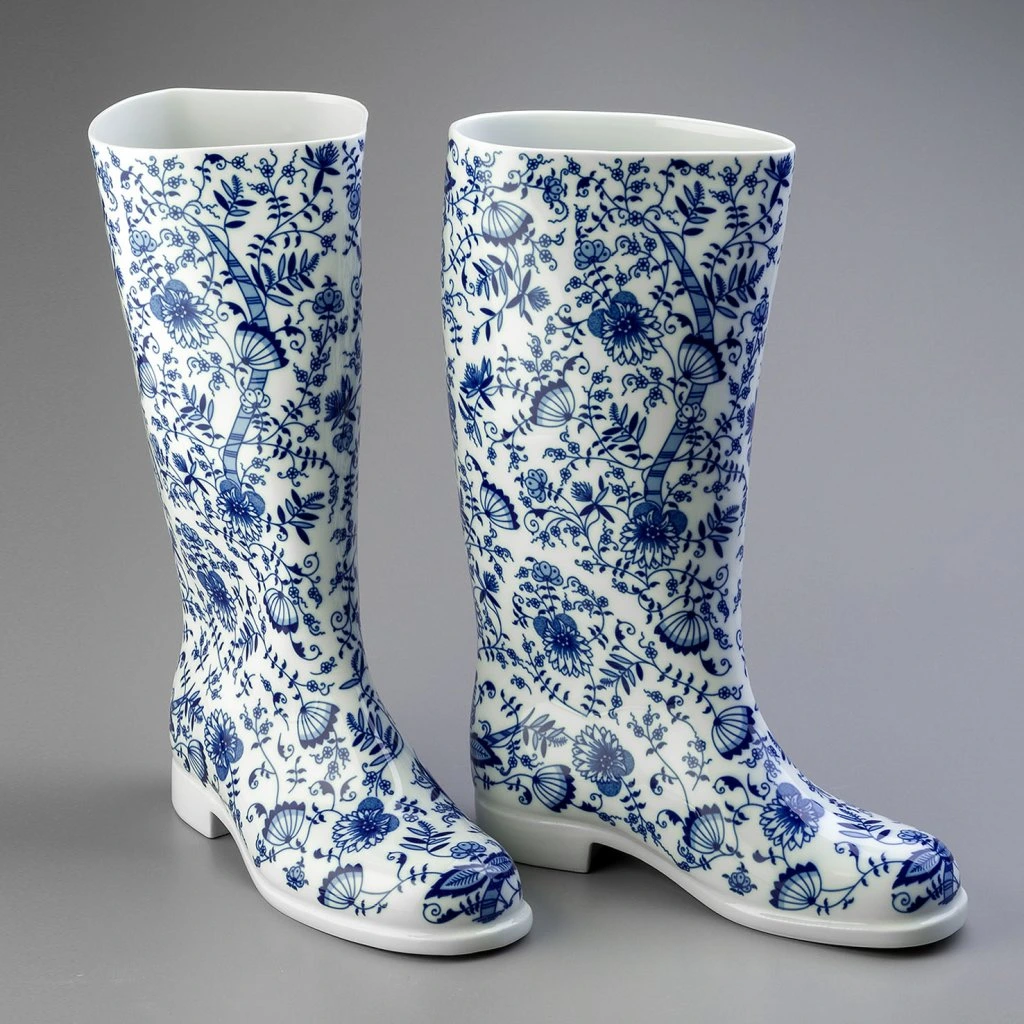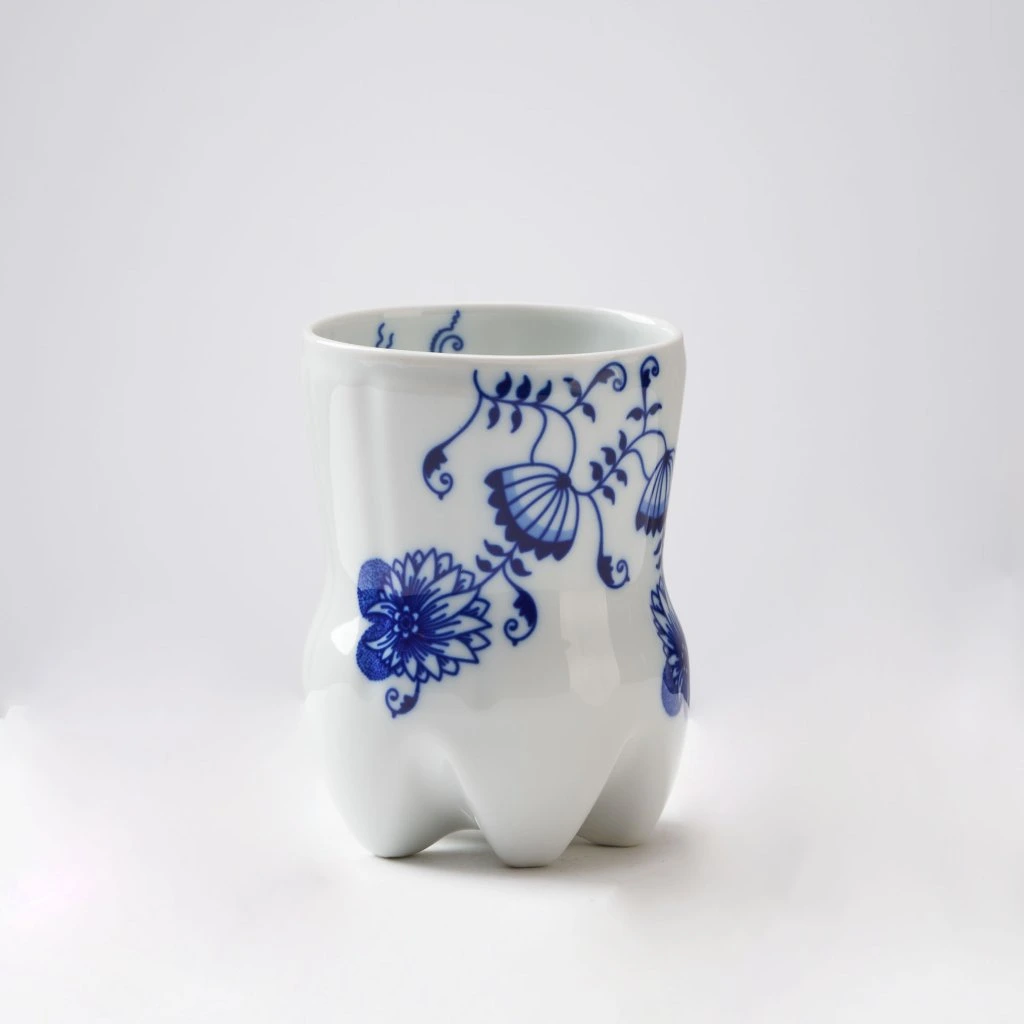The world of ceramics is full of surprises, not only in terms of technology or the beauty of the products themselves but also in the terminology that can easily confuse us. Rice porcelain? Could it really be made from rice? The "onion pattern" porcelain, where you won't find a single onion. And what about stoneware? Let's take a closer look at these and other tricky names that may bring both a smile and some contemplation.

Rice porcelain
Rice porcelain sounds like something you might have for dinner with a tasty sauce. The truth is, you won't find any rice in it at all. The name "rice porcelain" comes from a Chinese technique where tiny holes are hand-carved into the thin walls of the porcelain, resembling grains of rice. These holes are then filled with a transparent glaze, creating a beautiful, translucent effect. So while it may look as though it's covered with rice grains, it's simply the masterful craftsmanship of ceramic artists.
Onion Pattern Porcelain
The "onion pattern" is another misleading term that can lead one astray. The traditional blue-and-white porcelain design, known as "onion pattern," has nothing to do with onions. This motif, originally inspired by Chinese designs, actually depicts pomegranates, peaches, and other fruits and flowers. The name "onion pattern" came about by mistake when European manufacturers thought the pomegranates resembled onions. And thus, a term was born that confuses us all today.
It’s no wonder that this famous pattern has inspired numerous parodies.
The European version was created in 1729 at the first European porcelain factory in Meissen by Johann Kretschmar. In the Czech Republic, the technology was adopted in the late 19th century by a Czech porcelain factory in Dubí. Not only did it innovate the decorating process, but in 2004, it initiated a redesign by the highly acclaimed Jiří Pelcl, resulting in the Bohemia Cobalt collection, which enjoys great popularity today.
Czech Interpretation of Onion Pattern Porcelain: From Tradition to Contemporary Design
Hard and Soft Porcelain
Have you ever come across the terms "hard" and "soft" porcelain on ceramic e-shops? No, it's not about which porcelain is more comfortable. Hard porcelain is made at higher temperatures than soft porcelain. The difference lies in the composition and manufacturing process, not in which one will better withstand being accidentally knocked off the table.
Stoneware
Stoneware sounds like a material you might find at the bottom of a river or in the mountains. In reality, however, it doesn't have much to do with actual stone. Stoneware is a type of ceramic fired at high temperatures, giving it exceptional strength and hardness, similar to stone.

Leather-hard
Leather-hard? What is that? It refers to the state of clay during the drying process when the material is firm enough to handle but still moist and flexible, similar to leather. In this state, it's possible to attach pieces together, like adding handles to a mug. So, no real leather involved, just ceramic terminology.

Plate with a Flag
A plate with a flag doesn’t mean that national symbols are served on it. This term is used to describe a specific shape of the plate's rim that outlines its bowl-like section. The edge of the plate, nicknamed the "flag," rises slightly upward and can resemble the shape of a flag. It thus divides and frames the food served. This element can be found in both traditional and modern plate designs and is often decorated with various decorations.
Plate without a flag / Plate with a flag, collection in collaboration with Knedlo Zelo Wear & Lenka Záhorková
Conclusion
Ceramics is not only an art but also a world full of intriguing names that often hide stories and traditions that can surprise us. Discovering that rice porcelain has nothing to do with rice, or that onion pattern porcelain doesn’t contain onions, reminds us that things are not always as they seem at first glance. It is these little deceptions that make ceramics even more fascinating.
Do you have any other strange names in mind? Share them with us.
Author of the article: Lenka Záhorková, 2024














Comentarios